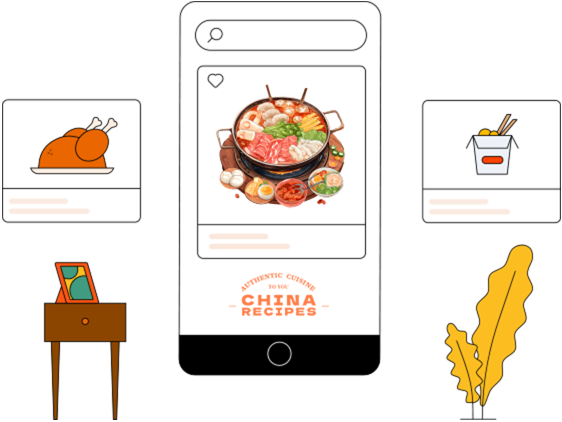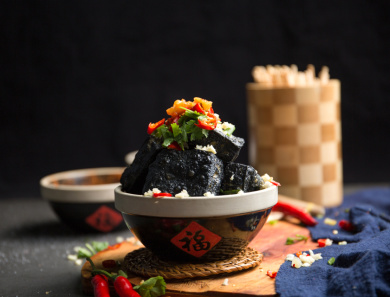What is Hunan Style? Exploring the Unique Spiciness
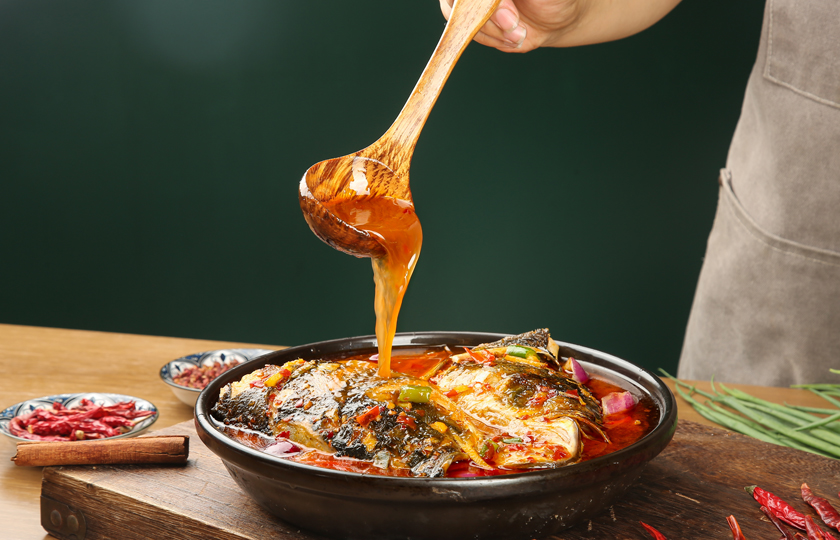
When people ask, "What is Hunan style?" the spiciness of pickled chopped peppers and the unique aroma of perilla always come to my tongue. Every bite is a gustatory declaration of the Hunan people's spirit of "enduring hardship, being patient, and persevering."
What is the meaning of Hunan style?
Hunan style usually refers to Hunan cuisine, which is one of the eight major cuisines in China and has distinct local characteristics of Hunan.
Hunan cuisine has a long history and took shape as early as the Han Dynasty. The cooking techniques had already reached a fairly high level. Its main characteristics are spicier and sour flavors, with an emphasis on freshness and fragrance. There are a variety of cooking techniques, especially expert in stewing, simmering, smoking, steaming and stir-frying.
What does Hunan style taste like?
Hunan style is mainly characterized by spiciness.
It uses a relatively large amount of oil, presenting bright colors. Seasonings such as chili peppers, fermented soybeans, garlic, ginger, and pickled vegetables are often employed. Meanwhile, it is paired with ingredients like cured meats and fresh fish. The overall flavor is fresh, spicy, savory, and sour, with rich layers. It has strong local characteristics and reflects the straightforward and warm-hearted food culture of the people in Hunan.
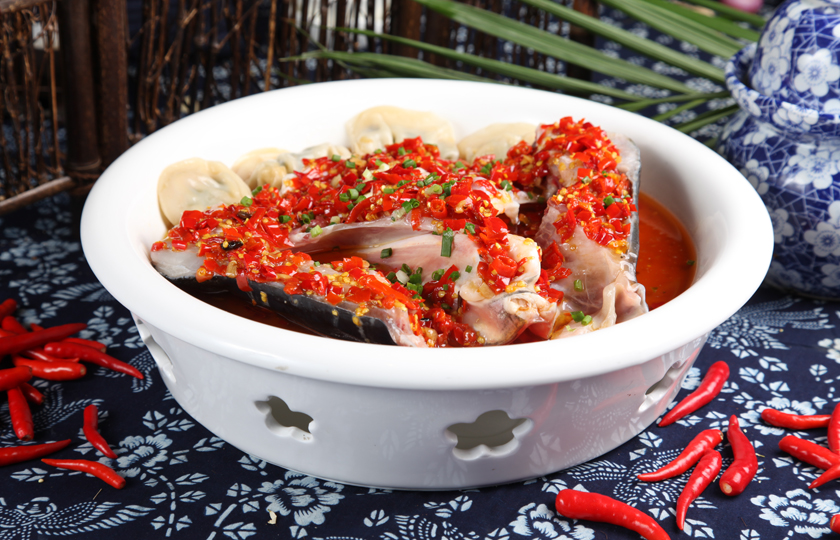
Classic Hunan dishes
Steamed Fish Head with Diced Chili: Using fish head as the main ingredient and steamed with diced chili, it is sour, spicy and appetizing.
Stir-fried Pork with Chili Peppers: Stir-fried with chili peppers and pork, it is simple but full of flavor.
Steamed Assorted Preserved Meats: Steaming preserved meats such as cured pork and cured fish, with a strong aroma.
Mao's Braised Pork: Using streaky pork as the main ingredient, it has a bright red color and is fatty but not greasy.
Spicy Crayfish: Using crayfish as the main ingredient, it is spicy, numb, fresh and savory. It is a popular dish in summer.
Recommendations for Hunan snacks
Stinky Tofu: Crispy on the outside and tender on the inside, with a unique smell. It is served with chili sauce or garlic sauce.
Rice Noodles: A common breakfast for people in Hunan, served with toppings such as beef and spareribs.
Tangyou Baba: A snack made of glutinous rice, crispy on the outside and soft on the inside, sweet but not greasy.
Hunan Style vs Sichuan Style
Hunan Style
Flavor Characteristics: Hunan cuisine features fresh and spicy flavors. The spiciness is straightforward and pure, with an emphasis on the freshness and aroma of the chili peppers themselves.
Cooking Methods: People in Hunan often use chili peppers as the main ingredient and cook with them directly. Dishes like Oil-Poured Chili Peppers and Pounded Chili Peppers with Century Eggs are examples. Hunan cuisine encompasses diverse cooking techniques, with stir-frying, stewing, and steaming as the main methods.
Cultural Background: Hunan has a humid climate, and chili peppers are used to counteract dampness. Thus, in Hunan cuisine, chili peppers serve as both seasonings and main ingredients.
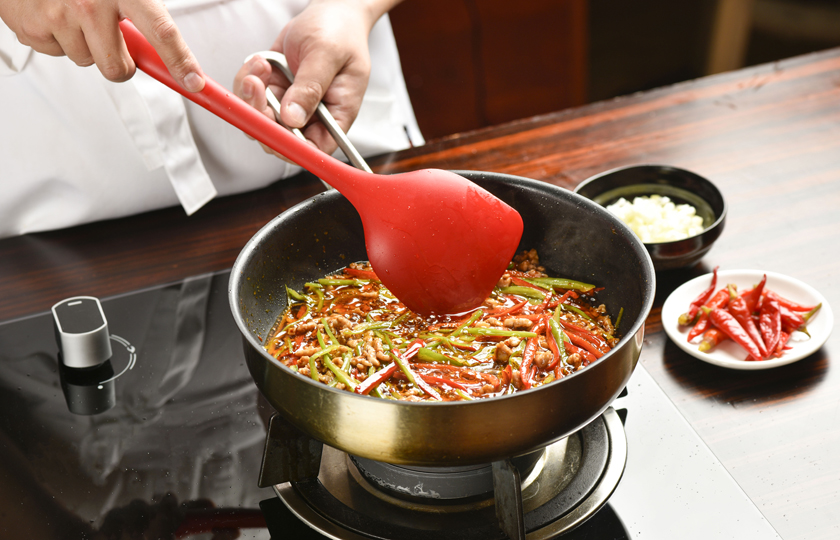
Sichuan Style
Flavor Characteristics: Sichuan cuisine is distinguished by its spicy, numbing, and complex flavors, highlighting the combination of multiple tastes.
In addition to spiciness, seasonings such as Sichuan peppercorns, broad bean paste, and pickled chili peppers are added to create classic dishes like Mapo Tofu and Kung Pao Chicken.
Cooking Methods: People in Sichuan usually use chili peppers as seasonings and use them in cooking after processing, such as red chili oil and broad bean paste. Sichuan cuisine has a wide range of cooking techniques, mainly including stir-frying, braising, boiling, and stewing. It excels particularly in quick stir-frying and dry sautéing.
Cultural Background: Sichuan has a humid climate, and the spicy and numbing flavors in the local diet help to keep cold and dampness at bay.
Which is spicier, Hunan or Sichuan?
Hunan cuisine.
In terms of the perception of spiciness, the spiciness of Hunan cuisine is more concentrated. It may be more direct and intense for those who are not accustomed to it. On the other hand, the spiciness of Sichuan cuisine is integrated with various seasonings. The stimulating feeling of spiciness is relatively neutralized. It appears to have rich layers but a slightly weaker spiciness, and instead, it leans more towards numbness.
Which is healthier, Hunan cuisine or Sichuan cuisine?
It can't be generalized. Both Hunan cuisine and Sichuan cuisine have their own health advantages and disadvantages. The choice of dishes should be based on personal constitution and health needs.
Hunan Cuisine
Advantages:
Rich in nutrition: Hunan cuisine often uses fresh chilies, vegetables, and meats, providing a balanced diet.
Diverse cooking methods: Mainly including stewing, stir-frying, and steaming, it emphasizes the original flavor of ingredients, which is relatively healthy.
Disadvantages:
High spiciness: Some dishes have a strong spiciness level, which may not be suitable for people with sensitive stomachs.
Some dishes tend to be salty: Such as cured meats like bacon and sausage, which have a high sodium content.
Sichuan Cuisine
Advantages:
Dispel cold and dampness: The spicy and numbing flavors help to dispel cold and dampness, making it suitable for humid areas.
Rich in flavor profiles: Sichuan cuisine is known for "each dish has its own flavor, and a hundred dishes have a hundred flavors", meeting different taste requirements.
Disadvantages:
High in oil and spiciness: Sichuan cuisine often uses a large amount of red oil, with a high fat content, which may be unfavorable for people trying to lose weight or those with cardiovascular health concerns.
Spicy and stimulating: It may cause discomfort for people with sensitive stomachs or those prone to getting irritated.
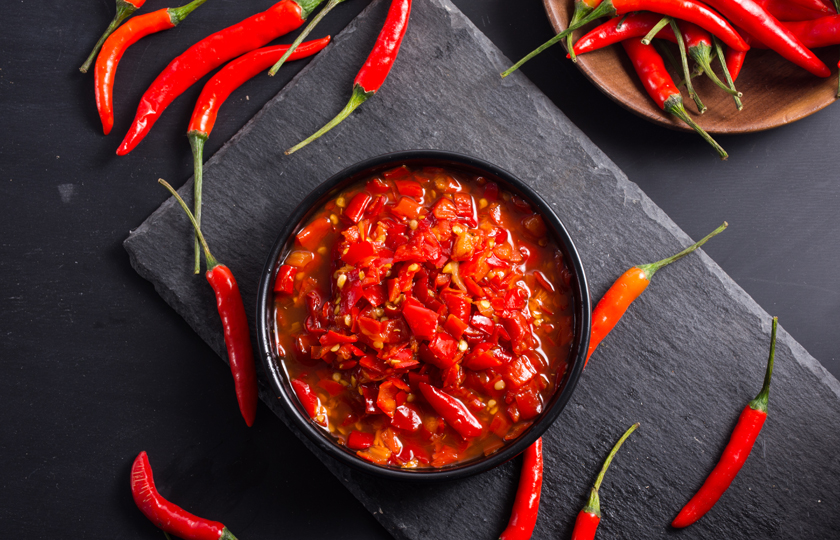
What is the taste of Hunan sauce?
The taste of Hunan sauce is characterized by freshness, spiciness, and rich aroma.
It usually uses fresh chili peppers, with a direct spiciness and a strong aroma. At the same time, it is often paired with some savory seasonings.
Some Hunan sauces also add fermented ingredients such as broad bean paste or pickled vegetables to enhance the hierarchical sense of flavor.
Generally speaking, Hunan sauce features freshness, spiciness, saltiness, and a strong sauce flavor. It is the soul of Hunan cuisine.





